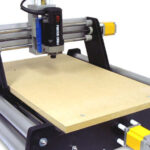In today’s digitally evolving landscape, businesses are constantly seeking smarter, leaner, and more scalable solutions to remain competitive. The convergence of the Internet of Things (IoT) with modern software development has created a fertile ground for innovation, especially for enterprises that understand the value of data-driven decision-making and real-time connectivity. Purpose-driven IoT solutions—those built around solving specific, tangible business challenges—are now a critical enabler of growth and transformation across industries. From logistics to healthcare, manufacturing to retail, businesses are leveraging IoT not merely as a technology trend but as a strategy for long-term value creation.
This article explores how purpose-driven IoT solutions can unlock business growth, how the software behind it works, what’s involved in developing such systems, and how real-world companies are using them to gain a competitive edge. Let’s dive into the immense potential of IoT when built with a clear, strategic purpose.
The Strategic Value of Purpose-Driven IoT Solutions
The essence of a purpose-driven IoT solution lies in its intentionality. It’s not just about connecting devices to the internet, but about solving specific business challenges—whether it’s reducing operational costs, enhancing customer experiences, improving supply chain visibility, or boosting workforce productivity.
For instance, a logistics company might implement an IoT-based fleet management system to track vehicle health, monitor driver behavior, and optimize delivery routes in real-time. In this case, the purpose is clearly defined: to reduce fuel costs, prevent breakdowns, and improve delivery efficiency. The solution is designed with that end goal in mind, making it far more effective and impactful than a generic IoT platform.
Purpose-driven IoT enables businesses to transition from reactive operations to proactive strategies. It offers real-time insights and predictive analytics that help companies stay ahead of the curve. By focusing on targeted outcomes, businesses can ensure higher ROI from their digital investments and make data-backed decisions with greater confidence.
How IoT Software Works: The Inner Mechanism
Behind every successful IoT solution is a robust software ecosystem that integrates various components—devices, sensors, data networks, and backend platforms. The working of IoT software can be broken down into several core stages:
First, IoT-enabled devices or sensors are deployed in the field to collect real-time data. These could be temperature sensors in a warehouse, motion detectors in a retail store, or GPS trackers on delivery vehicles. These devices gather data continuously and transmit it through a network—commonly via Wi-Fi, cellular, or LoRaWAN—to a cloud or edge computing environment.
Once the data reaches the cloud, it is processed and analyzed using intelligent algorithms. This is where software plays a transformative role. IoT platforms leverage data analytics, artificial intelligence, and machine learning models to extract insights, detect anomalies, and trigger automated actions. For example, if a manufacturing machine exhibits abnormal vibration patterns, the system can alert maintenance teams before a breakdown occurs.
The final output is delivered to business users through dashboards, mobile apps, or integrated ERP systems. These interfaces present insights in a user-friendly way, enabling decision-makers to monitor performance, detect issues, and act instantly. All of this occurs in near real-time, creating a responsive environment where businesses can adapt swiftly to changes.
Developing Purpose-Driven IoT Software: A Step-by-Step Approach
Creating a purpose-driven IoT solution involves much more than just writing code and deploying sensors. It requires a strategic understanding of the business’s needs, thoughtful planning, and iterative execution. Here’s how businesses can approach the development of such a solution:
The process begins with defining a clear business objective. What problem needs solving? What operational inefficiencies are costing the company time and money? This step is crucial because it sets the foundation for all technical decisions that follow.
Next, businesses must select the right hardware. Based on the objective, developers choose appropriate sensors, devices, and gateways. For instance, a cold-chain logistics company might need temperature and humidity sensors that can endure long transit periods.
The software architecture is then designed. This includes determining whether the data will be processed at the edge (near the device) or in the cloud, what communication protocols will be used (MQTT, HTTP, etc.), and how the system will scale as the number of devices grows.
Once the architecture is in place, developers build the core application—often using languages like Python, C++, or JavaScript. The platform integrates device data, user interfaces, analytics engines, and business systems (like CRMs or ERPs). Custom dashboards, alerts, and reporting tools are created to present actionable insights to users.
Security and compliance are critical components of development. Data encryption, secure access controls, and compliance with regulations like GDPR or HIPAA are embedded into the software from the start. Once developed, the system undergoes rigorous testing—both in simulated environments and in field deployments—to ensure reliability and performance.
After a successful pilot, the solution is rolled out at scale. Continuous monitoring, updates, and support ensure the system evolves with changing business needs. Many companies now turn to Custom IoT Software Solutions providers who offer tailored development services aligned with specific industry requirements and long-term strategic goals.
Benefits of Purpose-Driven IoT Solutions for Business Growth
1. Enhanced Operational Efficiency Through Real-Time Monitoring
Purpose-driven IoT solutions enable businesses to monitor operations in real-time, drastically reducing delays, errors, and downtime. By integrating smart sensors and connected devices into everyday processes, businesses can track equipment usage, detect inefficiencies, and address issues proactively. This not only cuts unnecessary costs but also helps optimize workforce deployment and asset utilization, giving managers precise control over workflows and outcomes.
2. Data-Driven Decision Making for Strategic Advantage
IoT devices collect and transmit vast amounts of actionable data that help leadership teams make informed decisions. When IoT strategies are aligned with core business goals, the data insights become powerful tools to identify patterns, forecast demand, and tailor services or production to customer behavior. This data-centric approach eliminates guesswork, allows for real-time market responsiveness, and ultimately contributes to more calculated, growth-focused decisions.
3. Improved Customer Experience and Personalization
A major benefit of purpose-built IoT solutions is their ability to personalize experiences and services based on real-time customer data. For example, connected devices in retail or healthcare environments can gather user-specific preferences, allowing companies to deliver targeted recommendations, proactive support, or automated service delivery. Businesses that prioritize user experience with smart technology foster greater brand loyalty and increase retention over time.
4. Scalable Automation and Cost Optimization
Automation enabled by IoT systems streamlines repetitive tasks, minimizes human error, and reduces the need for manual intervention. From inventory management to predictive maintenance, IoT applications help scale operations efficiently without proportionally increasing resource overhead. Purpose-driven IoT projects align automation efforts with cost-reduction goals—making it easier for businesses to scale without compromising productivity or service quality.
5. Sustainable and Eco-Friendly Operations
IoT devices help businesses reduce energy consumption, manage resources more intelligently, and reduce environmental waste. For instance, smart building systems optimize lighting, heating, and cooling based on occupancy and usage patterns. By tying sustainability goals to IoT implementation, companies not only meet regulatory requirements and stakeholder expectations but also create operational savings that contribute to long-term growth.
6. Faster Innovation and Competitive Differentiation
Purpose-built IoT solutions empower organizations to bring innovations to market faster by enabling rapid prototyping, agile product iteration, and real-time customer feedback loops. By integrating IoT into R&D or service development processes, businesses gain a competitive edge in adapting to market shifts and emerging consumer needs. Companies that adopt a purpose-driven IoT mindset position themselves as industry leaders—not just tech adopters.
Real-World Use Cases of Purpose-Driven IoT Solutions
To understand the real impact of purpose-driven IoT, we can look at companies that have successfully adopted these systems.
In agriculture, firms like John Deere have implemented IoT-driven precision farming tools. Their equipment is equipped with soil sensors and GPS modules that collect environmental data and optimize seeding, irrigation, and fertilization. The result is higher crop yields, reduced input costs, and more sustainable farming practices.
In retail, Amazon Go stores use IoT-enabled cameras and shelf sensors to create cashier-less shopping experiences. Customers simply walk in, pick up items, and walk out—while the system automatically charges their accounts. This innovation is redefining convenience and efficiency in brick-and-mortar retail.
In healthcare, remote patient monitoring solutions have become invaluable, especially in post-pandemic environments. Devices like smart insulin pumps or wearable ECG monitors send real-time data to physicians, enabling early intervention and better patient outcomes.
In industrial manufacturing, companies like Siemens use IoT to enable digital twins—virtual replicas of physical machines that simulate performance and predict failures. These tools reduce downtime, enhance product quality, and support continuous improvement.
Even in smart cities, municipalities are deploying IoT-based traffic management systems, smart lighting, and waste management solutions to enhance urban living and sustainability. Each of these implementations is grounded in a clear purpose and delivers tangible value.
The Road Ahead: Scaling with Purpose
As more businesses recognize the power of purpose-driven IoT, the focus is shifting from experimentation to scalability. Enterprises are no longer asking “should we invest in IoT?”—they’re asking “how do we scale this intelligently?”
The key lies in adopting a strategic mindset and working with experienced partners who understand both the technology and the business. Scalability must be built into the architecture from day one, allowing companies to add devices, users, and use cases as they grow.
Furthermore, continuous innovation in AI, edge computing, and 5G connectivity will expand the capabilities of IoT systems. Businesses that stay agile and commit to innovation will be well-positioned to ride this wave of transformation.
Conclusion
Unlocking business growth with purpose-driven IoT solutions is not a futuristic ambition—it’s a current reality for enterprises that understand how to harness technology strategically. These solutions empower businesses to operate more efficiently, respond faster, and innovate continuously. Whether you’re optimizing logistics, enhancing customer experience, or driving operational excellence, IoT offers a clear path to growth—if built with purpose at its core.
By focusing on specific business needs, collaborating with the right technology partners, and investing in scalable Custom IoT Software Solutions, companies can turn data into opportunity and complexity into competitive advantage. The time to act is now.



